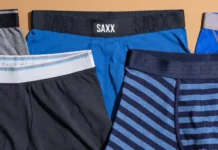
Running, for many, is more than just a physical activity. It’s a journey, a meditation, and a challenge. The rhythm of your heartbeat synchronization with your footsteps, the world blurring past – it’s an unparalleled experience. However, the pleasure of this activity can be diminished significantly if one doesn’t prioritize comfort, especially in terms of foot apparel.
The choice of socks and running shoes is not just about style; it’s about ensuring a comfortable and injury-free running experience. This post dives deep into the nuances of picking the right socks and shoes for maximum running comfort.
Understanding Your Feet

The foundation of your running journey begins with your feet. Just like fingerprints, everyone has unique feet. This individuality is defined by arch type and pronation, which play a critical role in determining the comfort of your run. For instance, a flat foot tends to overpronate, which means it rolls inward more than usual when running. Conversely, a high-arched foot may underpronate. Understanding these characteristics ensures that you select footwear that offers appropriate support, preventing discomfort and potential injuries.
Choosing the Right Running Shoes
There’s an overwhelming variety of running shoes in the market, each catering to different foot types and running styles. Broadly, they are categorized as neutral, stability, and motion control.
Neutral shoes are best for runners with a natural gait, without excessive pronation.
Stability shoes provide added support and are suitable for those who slightly overpronate.
Motion control shoes are for those who have a pronounced overpronation, offering maximum support.
Choosing the right fit is paramount. A snug heel, secure mid-foot, and spacious toe box are aspects to watch out for. Never compromise on fit; the wrong size can lead to blisters, toenail injuries, and other discomforts.
Sock Materials and Comfort
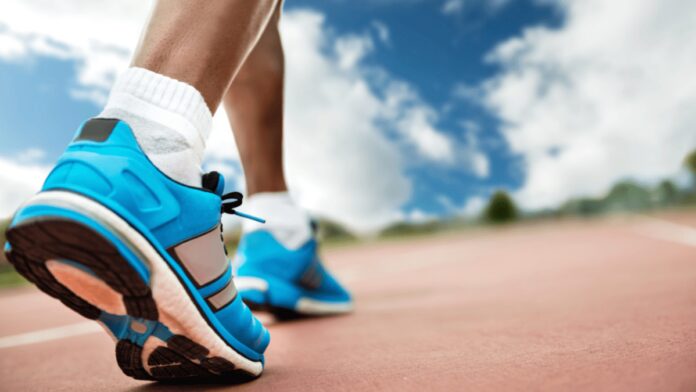
Just as with shoes, sock material can significantly influence comfort. Common materials include cotton, moisture-wicking synthetics, and merino wool. While cotton is soft and comfy, it retains moisture, potentially causing blisters in longer runs. Moisture-wicking socks are designed to redirect sweat and moisture away from your foot, making them great for sweaty workouts.
Merino wool, on the other hand, is excellent for colder conditions, offering warmth without sacrificing breathability. Your choice for men and women’s running socks should be based on the running environment and your body’s response to exercise.
Moisture Management
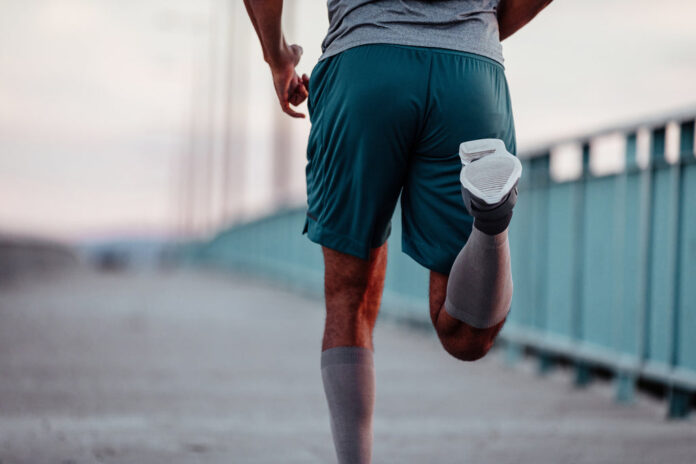
Managing foot moisture isn’t just a detail; it’s a key component for ensuring a comfortable and healthy run. Moisture-wicking socks excel in their design, tailored explicitly to draw sweat away from the skin. This mechanism not only helps prevent the formation of blisters but significantly reduces the risk of fungal infections, a frequent runner’s nemesis. Moreover, they combat foot odors, ensuring that even after an intense run, your feet remain relatively fresh-smelling.
When these socks are paired with breathable running shoes, the combo creates an unbeatable team that ensures feet remain dry across various distances. It’s essential to recognize that a damp foot doesn’t just feel unpleasant. It considerably increases friction, which in prolonged situations, can lead to discomfort and potential foot injuries.
Cushioning and Padding
For runners, especially those clocking in more miles, cushioned socks can feel like a dream. They act as an additional protective layer, diligently absorbing the brunt of impacts. The heel and ball of the foot, being primary contact points, especially benefit from this cushioning. The joy of these socks lies in their versatility. Depending on your preference, the type of run, and the terrain, you can choose from a spectrum of thicknesses. If you’re navigating rocky terrains or trails strewn with pebbles, thicker socks can offer enhanced protection, safeguarding your feet from sharp jabs.
Avoiding Friction and Blisters

The pain of blisters can cripple even the most passionate runners. Here, the design of your socks plays a crucial role. Seam-free socks, crafted with a smooth design, significantly reduce potential irritation points. They work by ensuring there’s a uniform surface in contact with your skin. It’s vital, though, that these socks fit just right. A too-tight sock can compress the foot, affecting circulation, while a loose one might bunch up or slide down, especially during dynamic movements. Such misfits are a recipe for increased friction, which eventually manifests as those dreaded blisters.
Sock Height and Running Style
Socks aren’t just about the material or cushioning; their height can influence your running experience. No-show socks, peeking just below the shoe line, are perfect for those who lean towards minimalism or are perhaps looking to flaunt their shoes. On the flip side, crew or even knee-high socks extend protection further up. They shield against trail debris, pesky twigs, or even the occasional brush against vegetation. When picking sock height, always align with your running style, environment, and personal comfort preference.
Combining Socks and Shoes
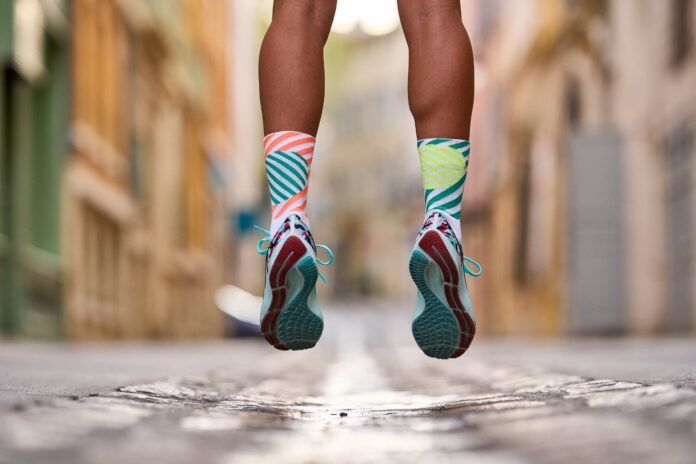
The symbiotic relationship between socks and shoes is fundamental to a runner’s comfort. A harmonious pairing can amplify the benefits each brings to the table. For instance, if you’re someone who swears by thin socks for their lightweight feel, pairing them with snug-fitting shoes can enhance foot sensitivity and ground feedback. On the other hand, those who prefer thicker, cushioned socks might want to opt for shoes with a slightly roomier toe box to accommodate the added volume without compromising on comfort.
Testing and Trying On
The journey to find the ideal sock and shoe combination often involves some trial and error. And that’s perfectly okay. It’s always a wise move to test multiple combinations, understanding the unique feel each pairing offers. During these fitting sessions, be observant. Notice the initial comfort, but also remember that materials, especially those in socks, might undergo slight changes in fit after a few uses due to stretching or shrinking.
Maintenance and Longevity
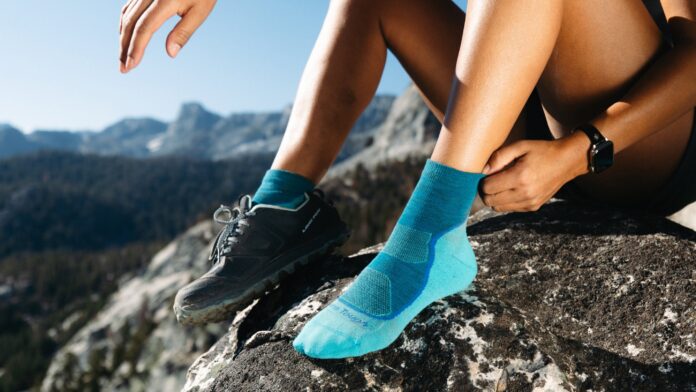
Quality running gear is an investment, and like all investments, you’d want to ensure they last. Proper care can significantly extend the life of your socks and shoes. Make it a habit to inspect them regularly for signs of wear and tear. Areas with thinning material or reduced cushioning are red flags. Specifically, for socks, if you notice a loss in elasticity or if they start sagging, it might be an indication that they’ve run their course.
Conclusion
Running is a joy when every stride feels right. Prioritize comfort in your gear choices, and your feet will thank you in miles. Whether you’re a marathoner or a casual jogger, remember that the right socks and shoes are the unsung heroes of your running story. Happy running!


